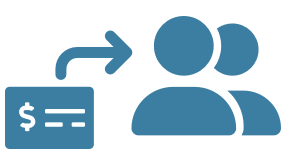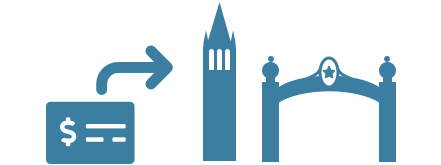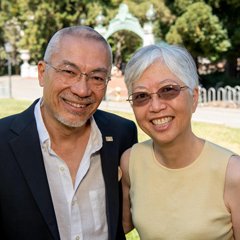Make a substantial gift and create a flexible source of income for yourself or a loved one.
How it works

You make a gift of cash, securities, or other appreciated property into a trust: a minimum of $100,000 for cash or securities and $250,000 net for real estate.

The trust pays a fixed percentage of the value of the trust assets, re-valued annually, to you or to beneficiaries you name.

When the trust terminates, the remainder passes to Berkeley to support the specific programs you designate.
- The minimum age of beneficiaries for all lifetime charitable remainder trusts is 60 at the time payments begin.
- The minimum age is not applicable for a term of years trust.
How you benefit
- Retain an income stream from the gifted assets for you or loved ones.
- Receive an income tax charitable deduction at the time of the gift based on the full fair market value of the gifted assets, less the present value of the income stream.
- Pay no capital gains tax at the time of gift.
- The trust can be for the lifetime(s) of the beneficiary or beneficiaries or for a term of years.
- You have the option of making additional gifts to the trust over time.
- Highly appreciated assets with no or low yield can be used to create more diversification.
TAX LAW (SECURE ACT 2.0) EFFECTIVE JANUARY 1, 2023
IRA qualified charitable distributions (QCDs) may be used to create a charitable remainder trust (subject to $100,000 gift minimum policy).
- You must be 70 ½ or older at the time of the transfer.
- The distribution must come directly from an IRA custodian.
- Spouses who qualify may each elect to contribute up to $53,000 from their respective IRAs to create a charitable remainder trust.
- Election available only once in an IRA owner’s lifetime.
- QCD distributions cannot be added to an existing CRT.
- Only the IRA owner and/or his/her spouse may receive the payments from the trust.
- Distribution can satisfy all or part of the required minimum distribution (RMD).
- Donors are encouraged to consult with their advisors as there are additional limitations.
Good Chemistry

For Mike ’77 and Ruth ’77 Cheng, all it took was a lecture to bring them back to Cal.
It was the late ’90s, and Mike — who earned a degree in chemical engineering — was invited to a talk hosted by the College of Chemistry. He’d been away for 20 years, so he thought, “Why not?”
“I ran into my old professor there, John Newman,” recalls Mike, who also holds an M.B.A. from Golden Gate University. “When he saw …
Read more